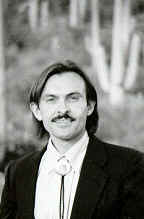I am now working three days weekly as a psychiatrist in a community mental health center. I am lucky to be working in New York State, where law mandates a minimum visit for patients of 25 minutes with 5 minutes for charting. When I worked previously in Pennsylvania, 15 minutes was the maximum visit, including time for charting. I once made the mistake of saving most of my charting for the end of the day so that I could stay on-time with the patients only to find that the mental health center refused to pay me for the charting time. Then I understood why the other doctors did all their charting after each patient, making the patients wait longer and longer as the day progressed.
The cornerstone of community mental health is the idea that most problems can be solved with medication. The bulk of the chronically mentally ill receive no psychotherapy, no group therapy, no skills training. They come every three months for medication. Generally, they see the doctor once every six months and the nurse, every six months, resulting in their quarterly schedule. Many of my new patients are surprised that I want to hear about their lives. Some are so well trained that, as soon as I hand them their prescriptions, they stand up and walk out, even if I am in mid-sentence, asking them about some symptom or facet of their life. Most are isolated, spending their days in poorly ventilated rooms, watching television, smoking cigarettes, and drinking coffee. They are not even organized to spend time with each other or to help each other.
Psychotherapy at the community mental health center is twenty-five minutes, twice monthly. A few lucky souls get to come for an hour weekly, though I'm not sure how they're selected. In this schedule, it's hard for people to do much more than complain about their lives and relationships. Problem-oriented or even cognitive behavior therapy (the darling of the psychological industry) requires more time and focus. People do not learn the skills needed for reducing anxiety, managing sadness, or even improving their relationships. The therapists quickly recommend medications as solution for life's woes. The reason is obvious medications appear to work swiftly on this schedule, for the side effects tend to emerge more slowly.
This is the sad state of community mental health in America, and New York has some of the best mental health care. The demand far exceeds the availability, of therapists, of doctors, of other resources. Day treatment programs have been dismantled for insurance will not cover them. The staff are well-meaning and seem to want to help the patients. They simply lack the time to do so. Is this better than nothing? Probably is my guarded answer. Some patients are helped by the medications. Some patients seem to get significant benefit from the 25 minutes twice monthly. Others do not and then decide that therapy doesn't work or that their condition is hopeless. Would it make more sense to treat a smaller number of people very well and make them more functional. Would that ultimately reduce costs on the system? I don't know. My bias is to help fewer people more profoundly with the idea that this would ripple out to affect the others. Perhaps future research could address these questions.
Also striking is the division between adults and children. When I was training in psychiatry, general psychiatry included everyone, though some specialized in child and adolescent psychiatry. Now the division is complete. There are adult psychiatrists and child psychiatrists. An adult psychiatrist cannot see a child and child psychiatrists are often too overburdened with the large number of children to see adults. Family psychiatry has largely disappeared. The children are dropped at the child door while the adults continue to the adult door. The child's therapist does not talk to the parent's therapist. Family treatment does not occur.
The role of the psychiatrist in this system is to write prescriptions. My predecessor had the reputation according to the patients I see of never spending more than 5 minutes with any of them. He got them in, wrote their prescriptions, and dismissed them. This would allow him 15 to 20 minutes to do other work while waiting for patients to appear. This would be an easy, non-stressful way to practice, though it requires being uninterested in the stories and the lives of the people we treat. The mental health center receives $138 for each paatient I see, regardless of how long I see them. My quota, as a 75% time employee is to see 120 patients per month. Within that constraint, I can see people for as long as I want.




